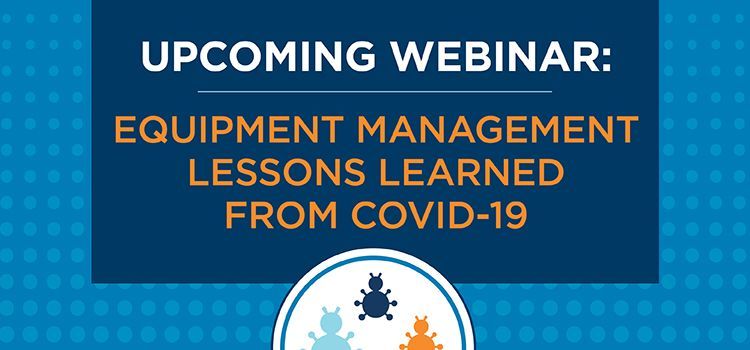
What Does Medical Equipment Management Look Like Moving Forward?
This article is a preview for a CPE-eligible webinar that will be hosted by HFMA in partnership with Agiliti.
Mon Oct 19 2020

In the early stages of the pandemic, serious gaps in our traditional healthcare supply chain network emerged. These gaps led to shortages of essential medical equipment front-line caregivers needed to meet the demands of a widespread pandemic. As a result, hospitals were challenged to either procure or mobilize as many ventilators, beds, infusion pumps and other moveable medical equipment (MME) as possible – as quickly as possible.
The question a lot of healthcare leaders are faced with right now is: what’s next? Is COVID-19 an outlier, or do we need to fundamentally change how we access and manage essential medical equipment and other supplies?
Looking Ahead: Changes to Emergency Preparedness Strategies?
Early feedback suggests that many organizations are already expecting to make changes regarding their PPE conservation, medical equipment inventory and number of product suppliers in order to better prepare for future, large-scale events. At a minimum, facilities that have seen an influx of new medical equipment come through the door need a plan to ensure that it is managed effectively.
However, hospitals and health systems face a number of challenges that hinder their ability to effectively and efficiently prepare for large-scale, unpredictable events. Here is a look at just a few of the difficulties confronting hospitals and health systems today:
Scalability – Most of our traditional network of hospital operations are not built to scale up and down based on variable patient volumes – especially when those volumes change quickly. A lack of preparedness led to a reactionary spike in hospitals purchasing more equipment, adding to the challenge as few facilities have the infrastructure to quickly mobilize medical equipment onsite or between facilities to ensure it ends up where it is needed most.
Stashing the Goods – Space is at a premium in every hospital and storing excess equipment onsite when that equipment isn’t being used can seem like a waste of space. Add to that the money it costs to service these idle devices, and you start to see a financial pressure that extends well beyond the current COVID-19 crisis.
Not Enough Technical Resources – Hospital equipment fleets have nearly doubled over the past 20 years, and there’s been an even further increase as a result of COVID-19. But the technical labor resources inside the hospital walls have not kept pace. These challenges have been amplified over the last few months, as in-house biomedical teams need to keep up with their previous workloads – while also meeting the requirements of any new equipment that comes in the door. Compounding it all is an ongoing shortage of technical talent that means hospitals can’t find and hire trained, experienced clinical engineering talent quickly enough to meet acute demand.
Increased Infection Risk – COVID-19 has pushed many hospitals to take a closer look at how MME is reprocessed – cleaned and disinfected – between patient use. This equipment has some of the most-touched surfaces in a hospital. If these life-saving devices aren’t being cleaned properly between patient use, they could also become dangerous vectors for spreading COVID-19 and other illnesses.
Learning From the Experts
To better understand some of these challenges and to jumpstart your equipment readiness, join the upcoming webinar– Better Equipped for What Comes Next, Pandemic Insights and Future-Focused Equipment Management Strategies. Agiliti is hosting this CPE-eligible webinar in partnership with Healthcare Financial Management Association (HFMA) on Oct. 22, from 12-1 PM CDT.
This roundtable will include a panel of healthcare executives who will take a look back at lessons learned from the early stages of the pandemic regarding medical equipment procurement and management – what worked well, what didn’t – and what steps their organizations are taking to prepare for the end of this year, into 2021 and beyond.
